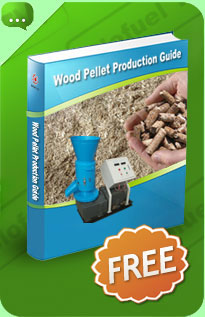Pellets Machine
With the fast development of the world, and the increasing requirement for green fuel, more and more people are demanding for pellets machine that producec wood pellets for home use. We are aiming at providing you some knowledge about wood pellets.
Energy density
The term 'energy density' refers to the energy contained in a fuel per unit weight; figures are usually quoted in GJ/tonne. The energy density of fossil fuels is considerably higher (up to three times) than that of biomass fuels such as pellets or wood chips.
* assumes 10% moisture
** assumes 25% moisture
Moisture content has a drastic effect on energy density for all biomass materials. Wood pellets below 10% moisture (as stipulated by the British BioGen code of good practice), have an energy density of around 16.8 GJ per tonne. Wood chips can vary from 14.3 GJ/tonne at 25% moisture to 9.5 GJ/tonne at 50% moisture, making wood chips a more un-predictable form of fuel.
Embodied energy of wood pellets
If dry wood is being used (eg: dry wood shavings or recycled pallets), the embodied energy will be considerably lower than that of newly harvested willow coppice, which requires a higher degree of drying.
embodied energy expressed as % of total produced:
• dry wood ~ 1.62%.
• damp wood ~ up to 17.6%
Embodied energy figures for wood pellets derived from short rotation coppice should take account of cultivation and harvesting inputs, these can be as high as 30%* however, the equivalent value for fossil fuels such as refining and transport are rarely considered.
Energy costs
Calculations as to the cost of pellets vs. other fuel types should take account of energy density and cost per delivered unit. Different fuel types are delivered in different ways eg: oil in pence/litre or pellets in £/tonne. For this reason it is best to compare costs in pence per kWh - that is to say the cost of 'delivered energy'
Prices are based on domestic tariffs, larger users such as schools or businesses can buy wood pellets considerably cheaper.
• delivered LP gas is the most expensive
• wood chips are the same price as mains gas
• wood pellets are cheaper than delivered LP gas
• wood pellets are only 0.1 pence/kWh more expensive than heating oil
At today's prices wood pellet fuel is competitive with delivered oil and significantly cheaper than delivered gas, however these figures don’t account for delivery charges which can be higher for wood pellets since there are less retail outlets nation wide.
With the price of oil and gas likely to rise, and the cost of pellets likely to fall with increased demand, these cost saving pellets machines could become even greater in the future.

